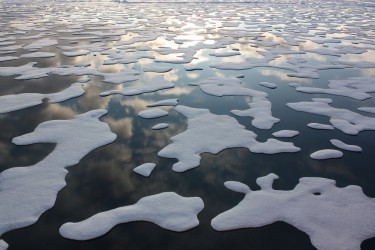
While winter sea ice in the Arctic is declining so dramatically that ships can now navigate those waters without any icebreaker escort, the scene in the Southern Hemisphere is much different. Sea ice around Antarctica has actually increased slightly during winter — until last year.
About a year ago, a dramatic drop in Antarctic sea ice during spring in the Southern Hemisphere brought its maximum area to its lowest level in 40 years of record keeping. Ocean temperatures were also unusually warm. This exceptional, sudden nosedive in Antarctica differs from the long-term decline in the Northern Hemisphere. A new UW study, published Aug. 24 in Geophysical Research Letters, shows that a lack of Antarctic sea ice in 2016 was in part due to a unique one-two punch from atmospheric conditions in the tropical Pacific Ocean and around the South Pole.
“This combination of factors, all these things coming together in a single year, was basically the ‘perfect storm,’ for Antarctic sea ice,” said corresponding author Malte Stuecker, a UW postdoctoral researcher in atmospheric sciences. “While we expect a slow decline in the future from global warming, we don’t expect such a rapid decline in a single year to happen very often.”
Read more at UW Today »
